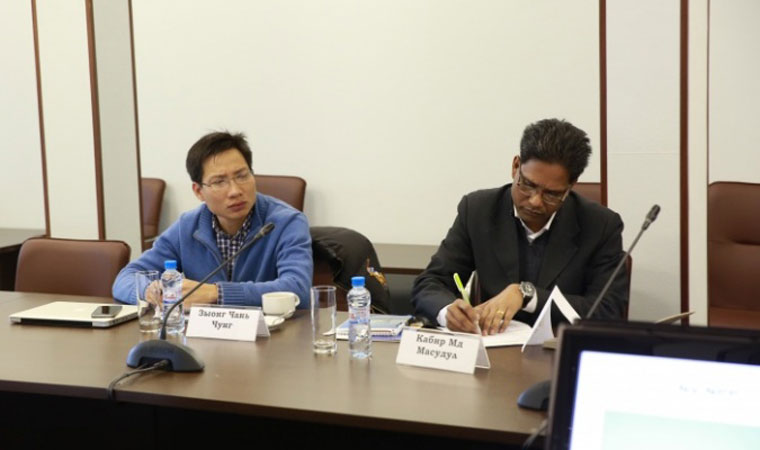
Nuclear stations welcome partners
back to contentsRepresentatives of the Kola and Armenian nuclear stations shared their expertise in improving safety of maintenance and repairs. The discussion took place during a visit organized under the auspices of the World Association of Nuclear Operators (WANO).
The only nuclear station in Armenia operates the same model VVER-440 reactor as the Kola NPP. According to Armen Arshakyan, Head of Repairs at the Armenian NPP, the Armenian delegation identified many positive practices already on the first day of the visit. “As a maintenance engineer, I was particularly interested in equipment modernization. We have figured out how these practices, particularly equipment tagging, can be used at our facilities. We liked very much how maintenance processes are organized at the Kola NPP, among them a system of work permits. We plan to introduce a similar system in Armenia,” Arshakyan noted. As part of their visit, Armenian engineers were demonstrated a recently built training center designed specifically for the maintenance staff.
Representatives of the Swedish Radiation Safety Authority (SSM) came to the Kola NPP to discuss upcoming events under the Swedish government supported program of technical assistance to the Russian nuclear station. The parties made a decision to modernize the plant’s safety equipment within the next few years. “The project is yet another stage of cooperation between the Kola NPP and SSM. Although the installed equipment is very efficient, our modernization effort is focused on improving overall safety of the station,” explains Thor Stenberg from SSM.
The equipment in question is used by the non-destructive testing laboratory to monitor the condition of steam generator tubing at the Kola NPP reactor units. The latest 3D technologies offer a more detailed analysis of defects in the tubing, help assess their gravity and potential, and extend the scope of diagnostics to cover more steam generator tubes at a time.
The shipment of new eddy current testing systems might be financed, along with Sweden, by regulating authorities of Finland and Norway. The testing systems will be manufactured, delivered and installed by HRID NDT (Croatia).
Cooperation between the Kola NPP and the Swedish Radiation Safety Authority began in 1993. Since then, nearly 50 joint projects have been implemented at the Kola NPP under the Technical Assistance Program supported by the Swedish government.
Meanwhile, 12 people from five countries (Egypt, Bangladesh, Pakistan, Vietnam and Belarus) came to the nuclear station in Novovoronezh to take a training course on technical specifics of VVER-1200 reactors and regulatory aspects of nuclear safety.
“The trainees are representatives of national nuclear regulatory authorities that are functionally similar to the Russian regulator Rostechnadzor,” says Sergei Nistratov, Head of International Business Cooperation at the nuclear station.
The training course is divided into three sections, each lasting one week. Week 1 will be devoted to the theory of VVER-1200 reactors to be installed in Units 6 and 7 of the Novovoronezh NPP. Theoretical aspects will be explained by the training center staff. Week 2 curriculum will cover regulatory aspects of maintaining safety at nuclear power plants. These lectures will be delivered by representatives of the local agency for nuclear and radiation safety. The third section of the training course will include tours to reactor units of the Novovoronezh nuclear power plant. At Unit 6, the foreign trainees will be shown the work in progress and innovative safety systems.
“There are no nuclear stations in the countries whose representatives are trained here at the moment. Four out of five countries are negotiating opportunities for nuclear stations to be built by Russia. Belarus is yet the only state where two VVER-1200 based reactors are currently under construction. One of them is scheduled for commissioning in 2018,” Nistratov explains.
Belarusian engineers have been trained at the Novovoronezh NPP since 2011 when plans were first announced to construct a nuclear station in that country. For the last 5 year, the Novovoronezh NPP was visited by more than 90 engineers and officials from Belarus. Eight visits were made by interns from the Belarusian National Technical University (BNTU). National regulatory officials came four times, and three training sessions were organized for employees of the now constructed Belarusian NPP. Just a month ago a group of students, who will work at the Belarusian NPP, finished their internship at Novovoronezh. A new training program involving more than 250 employees from Belarus will begin in early April.




